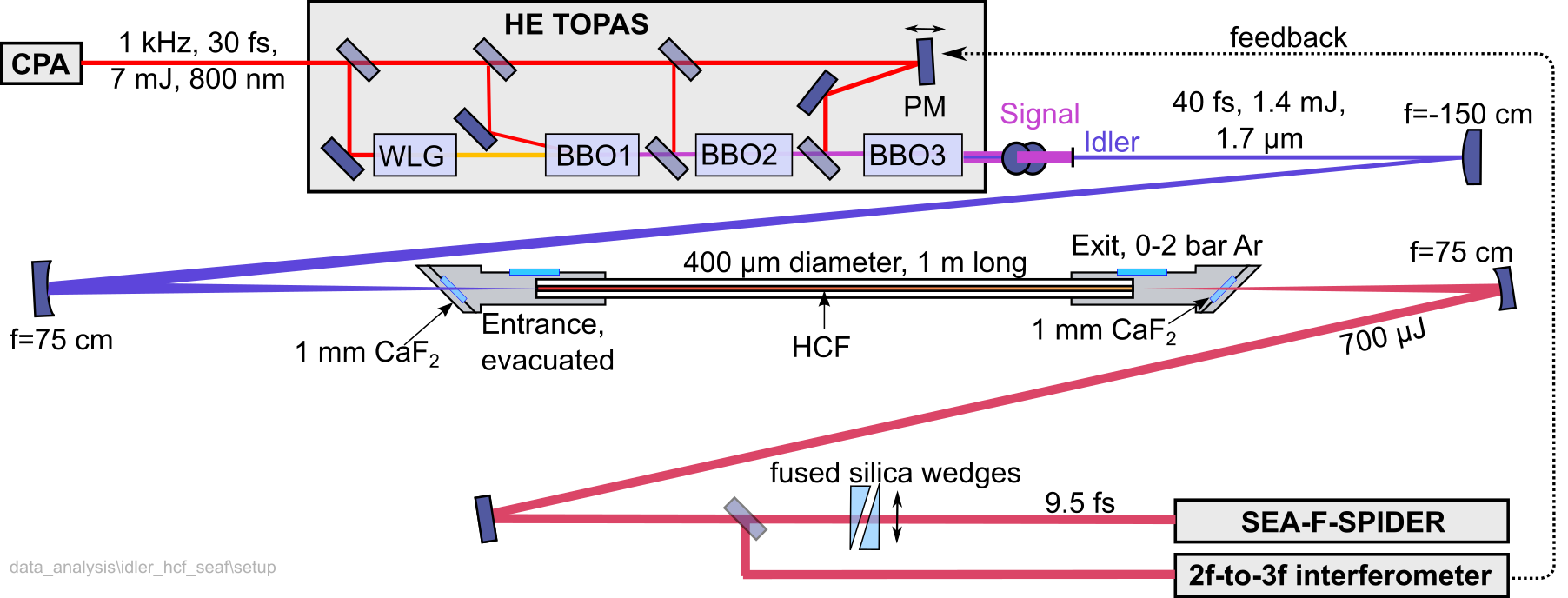Isolated attosecond pulse generation
The need for isolated soft x-ray pulses
Isolated sub-femtosecond soft x-ray pulses are a key ingredient in advancing transient spectroscopy to enable to real-time observation of electronic motion in chemical reactions. Sub-fs pulses are required to produce “snapshots” of this motion, which occurs on timescales of 100 as (1 as = 10-18 as) to several fs. The soft x-ray spectral region is incredibly useful because if offers element specificity. For example, at photon energies around 400 eV, absorption of radiation in a material is dominated by nitrogen. Changes in the absorption spectrum around 400 eV therefore reflect changes in the electronic structure around the nitrogen atoms in the sample. Soft x-ray spectroscopy of static samples provides insight into the structure of materials indicating, for instance, which valence electronic orbitals are unoccupied. Dynamic, or transient spectroscopy, brings the dimension of time to the problem. Some kind of process is triggered in the sample - for example, a burst of ultraviolet light can initiate a rapid change in the arrangement of a biomolecule. The soft x-ray probe pulse is subsequently applied after a certain time delay. Provided the probe pulse is shorter than the timescale of the process, it captures the state of the sample at that moment. Repeating the process with different time delays allows one to build up a dynamic picture - almost a “molecular movie” - of the evolution.
Setup for generating isolated attosecond bursts
Due to the lack of suitable gain media, coherent ultraviolet and x-ray radiation cannot be generated directly by a laser like visible light. Instead we start with an intense infrared laser pulse and use the highly nonlinear optical process of high-order harmonic generation to covert the radiation to the soft x-ray region.
Few-cycle CEP-stable 1.8 micron pulses
We have developed a state-of-the-art setup for producing 0.7 mJ, 9 fs carrier-envelope phase stable pulses at 1800 nm. It is based on the concept of hollow fiber pulse compression, with phase compensation provided by propagation in bulk glass.

Here is the setup in more detail.

High-harmonic generation is incredibly sensitive to the spatio-temporal profile of the drive laser pulses and so it is important to fully characterize this. To this end we developed a form of , called SEA-F-SPIDER, capable of measuring the spatio-temporal profile of few-cycle pulses in the spectral region around 1.8 micron.
Evidence of isolated pulse: carrier-envelope phase scan
In the animation below, the left-hand plot shows the cutoff of an experimental spectrum (red) overlaid on a theoretical calculation (blue) as the carrier-envelope phase of the drive pulse is scanned. The color plot shows the spectrogram (time-frequency distribution) of the calculated radiation. The bottom plot shows the calculated temporal profile (blue) of the generated soft x-ray pulse, along with the envelope (red dashed) and electric field (solid red) of the driving laser pulse.

Beyond mere isolation of attosecond pulse: pulse shaping
I published a theoretical proposal for shaping of attosecond pulses i.e. the ability to control the temporal profile and produce e.g. pulse sequences.